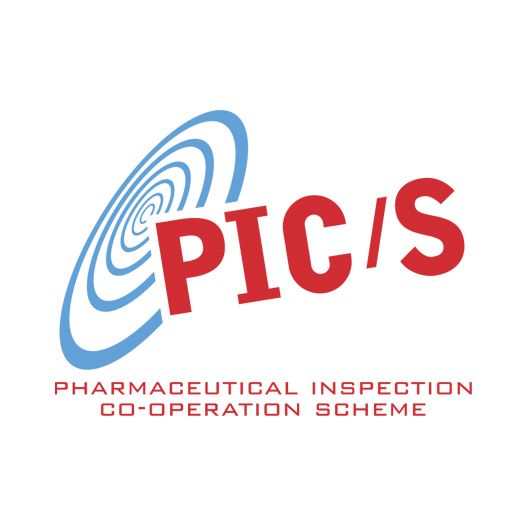PIC/S Guidance on Classification of GMP Deficiencies
11.01.2019

The PIC/S Guidance on Classification of GMP Deficiencies (PI 040-1), developed by the PIC/S Working Group on Classification of Deficiencies, chaired by Australia / TGA has entered into force on 1 January 2019.
This guidance is intended to provide a tool to support the risk based classification of GMP deficiencies from inspections and to establish consistency amongst Inspectorates.
The document should enable Industry to be informed of the principles used to classify GMP deficiencies and also provide examples of the classification of different types of deficiencies. This approach is not binding as the classification takes also into account the context of the finding and the quality history of the site. It does not remove the responsibility of the company in assessing the impact of the finding on the products already on the market and/or on their quality system.
Consistency of classification of GMP deficiencies will assist in the following:
a) Improve inter-agency consistency in reporting and facilitate communication between inspectorates;
b) Harmonise inspectorate response and management of deficiencies classified as “Critical”, “Major” and “Other”;
c) Provide transparency in how the deficiencies are classified; and
d) Simplify international deficiency trend analysis based on harmonised reporting of GMP deficiencies from different inspectorates.
This guidance is also intended to:
a) provide actions to be taken by inspectorates in response to the reporting of critical and major deficiencies;
b) enhance communication, information sharing and scientific exchange to promote increased consistency and predictability in regulatory assessments and decisions and the rapid exchange of safety and quality information regarding manufacturers.
The documents provides following definitions:
Critical Deficiency ‒ a deficiency which has produced, or leads to a significant risk of producing either a product which is harmful to the human or veterinary patient or a product which could result in a harmful residue in a food producing animal.
A “Critical” deficiency also occurs when it is observed that the manufacturer has engaged in fraud, misrepresentation or falsification of products or data.
A “Critical” deficiency may consist of several related deficiencies, none of which on its own may be “Critical”, but which may together represent a ”Critical” deficiency, or systems’ failure where a risk of harm was identified and should be explained and reported as such.
Major Deficiency ‒ a deficiency that is not a “Critical” deficiency, but which:
- has produced or may produce a product which does not comply with its Marketing Authorisation, Clinical Trial Authorisation, product specification; pharmacopoeia requirements or dossier;
- does not ensure effective implementation of the required GMP control measures;
- indicates a major deviation from the terms of the manufacturing authorisation;
- indicates a failure to carry out satisfactory procedures for release of batches or (within PIC/S) failure of the authorised person to fulfil his/her duties;
- consists of several “Other” related deficiencies, none of which on its own may be “Major”, but which may together represent a “Major” deficiency or systems failure and should be explained and reported as such.
Other Deficiency ‒ a deficiency that is not classified as either “Critical” or “Major”, but indicates a departure from Good Manufacturing Practice (GMP).
A deficiency may be judged as “Other” because there is insufficient information to classify it as “Critical” or “Major”.
Comment ‒ one-off minor discrepancies are usually not formally considered deficiencies, but are brought to the attention of the manufacturer as comments.
Critical Deficiency Examples:
Examples of deficiencies rated as “Critical” (in the absence of risk reducing factors) include the following where it can be reasonably expected that the definition in this Guidance will be met. A “Critical” deficiency is a serious situation that could result in regulatory action being considered.
- Lack of sterilisation validation (relevant to all sterile products).
- Lack of adequate control measures resulting in an actual, or significant risk of, cross contamination above the level of the health based exposure limit in subsequent products.
- Evidence of gross pest infestation (relevant to all manufacturers).
- Falsification or misrepresentation of analytical results or records (relevant to all manufacturers).
- Failure to ensure the quality and/or identity of starting materials (relevant to all manufacturers).
- No master batch documents (relevant to all manufacturers).
- Absence, falsification or misrepresentation of manufacturing and packaging records (relevant to all manufacturers).
- Water system for sterile products not validated (for manufacturers of sterile products).
- HVAC system for sterile products not validated (for manufacturers of sterile products).
- Grossly unsuitable premises so that there is a high or likely risk of contamination (relevant to all manufacturers).
- No evidence that mandated recall processes have been complied with (relevant to all manufacturers).
Major Deficiency Examples:
Examples of deficiencies rated as “Major” (in the absence of risk reducing factors) include the following:
- Lack of validation of critical processes (applicable to all medicines, but could be “Critical” for low dose/high potency products; particularly sterilization processes for sterile products)
- No or grossly inadequate air filtration to minimise airborne contaminants (applicable to all medicines manufacturers - could be “Critical” if possible contaminants are a safety concern and “Critical” for sterile medicines)
- Missing or ineffective control measures to provide adequate confidence that cross contamination will be controlled within the health based exposure limit in subsequent products. (would be “Critical” if resulting cross contamination has or is likely to exceed the health based exposure limit)
- Damage (holes, cracks, peeling paint) to walls/ceilings in manufacturing areas where product is exposed in non-sterile areas
- Design of manufacturing area that does not permit effective cleaning
- Insufficient manufacturing space that could lead to mix-ups
- No raw material sampling area for medicine manufacturers (could be classed as “Other” if adequate precautions are taken)
- Sanitary fittings not used on liquid/cream manufacturing equipment
- Stored equipment not protected from contamination
- Individuals in charge of QC/production not qualified by education, competency training and experience
- Inadequate initial and ongoing training and/or no training records
- Cleaning procedures not documented and/or no cleaning records
- Production equipment cleaning procedures not validated
- Reduced QC testing of raw materials without data to certify suppliers
- Incomplete testing of raw materials
- Test methods not validated
- Complex production processes for non-critical products not validated
- Unapproved/undocumented changes to master batch or equivalent documents
- Deviations from instructions not approved
- No or inadequate internal inspection program
- No proper release for supply procedure
- Product reworked without proper approval
- No system/procedures for handling complaints or returned goods
- Inadequate testing of packaging materials
- No ongoing stability program and/or stability data for all products not available
- Insufficient lighting in production or inspection areas
- Containers from which samples have been taken not identified
- The temperature of critical temperature controlled storage areas not monitored and alarmed
- Inadequate change control system
- Inadequate deviation system
- No investigation into alarms and temperature excursions for deviations from storage or transport requirements.
The entire document available under the link https://www.picscheme.org/layout/document.php?id=1609

